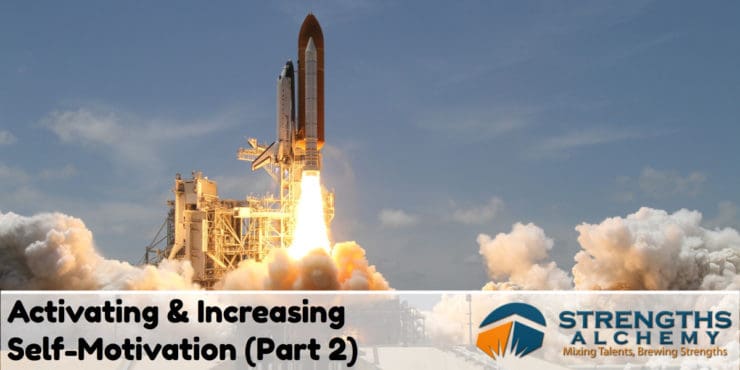
“5… 4… 3… 2… 1… BLAST OFF!” The voyage began at 9:32 a.m. EDT, July 16, and ended 4 days later on July 20 at 4:18 p.m. EDT, when the Lunar Module of the Apollo 11 finally landed on the Moon. 1. It was mankind’s first foray to the moon and getting there was no easy feat. It involved years of research and preparation, cutting edge technology, and 1.5 orbits of the Earth.
The complicated process of getting a rocket to the moon, when simplified, describes a propulsion system that brings something from one place to another. Likewise, we can also create a propulsion system to motivate ourselves. This article is the second part to our Self-Motivation series and follows up on part one, on how self-motivation can increase with the alignment of passion, purpose, and strengths.
Pain/Pleasure Principle
There are two key forms of motivation for people – Pain or Pleasure. Both have their own merits and flaws, and we all tend to use one form more than the other.
Before we go further, take a little time to consider for yourself, what really motivates you. Is it something that you want (such as freedom and joy) or something you are trying to avoid (such as shame and embarrassment). Be totally truthful with yourself on this.
Ready? Let’s move on.
Let us look more closely at each principle.
Pain – An “Away From” Strategy
People who are motivated by avoiding pain use an “Away From” strategy. They have something in their mind that they don’t want. It could be hypocrisy, or even just an avoidance of becoming like someone. For example, some people’s motivation is so that they don’t become like their siblings, or their parents (family members are a common reference in these situations).
This approach can create a surge of energy to take action, especially when one discovers that he is suddenly closer to what he doesn’t want. Like 2 magnets with the same polarity facing each other, the closer one is to what he/she wants to avoid, the greater the opposing force. The force represents motivation for action. The reverse is also true; the further one is away from the avoided subject, the weaker the force or level of motivation.
The flaw of this strategy is that it is directionless and can use haphazard behaviours. If you try to repel one magnet from the other, you often find that even with an end-goal in mind, it can be challenging to get the magnet to move in the direction that you want. For example, in one of my career coaching sessions, my client had tried several roles without being able to identify one that she really loves. In the conversation, we soon discovered that she employed a purely a “away from” strategy, and any role was fine as long as it was the opposite of what she didn’t like. I pictured the way she approached her job search to that of a ball in a pin-ball machine – a series of powerful repulsion from each contact, and moving in a haphazard manner.
What about people who are motivated by pleasure?
Pleasure – A “Towards” Strategy
People who are motivated by pleasure use a “Towards” strategy. The clearer their destination, the greater the motivation. However, I’ve found that pleasure is often times a weaker motivator in the amount of energy it generates. Perhaps it is because it can sometimes seem distant, or it can lack the energy required to break a person out of their current comfort zone or state of inertia.
However, this strategy helps one to keep the eye on the prize, and creates direction.
Which Strategy is Better?
Let’s come back to the story we started with. Is the navigation system of the rocket or its fuel cells more important in its success in getting to the moon? Both!
Without the navigation system, the rocket is doomed to fly across space aimlessly until it ultimately runs out of fuel. The only thing it is able to achieve is to leave the earth’s atmosphere.
Without the fuel cells, the rocket can forever be aiming towards its destination, but will never leave the surface of the earth! (Hmm… sounds like me in many situations!)
Likewise, a combination of both Pain and Pleasure creates the propulsion system that helps us get to where we want to go.
Create your own Propulsion System now
Start with your own motivational strategy right now.
If you use an “away from” strategy dominantly, consider the outcome you wish to achieve. What would you see, hear or feel when you have arrived? Why is this important? What benefits would it bring you? (Be sure to state the response to the last two questions in the positive)
If you use a “towards” strategy dominantly, consider cost for not taking action now. What would that translate to 3-, 5-, 10-years down the road? Who else would that affect? What other consequences are there if you do not start now?
I’d love to hear your comments and experiences as you put this into practice.
